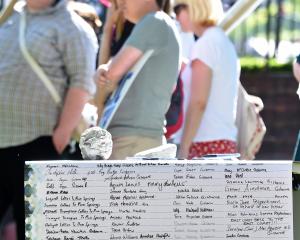
The 12 brick tanning pits were found under the old Cadbury buildings, and excavated by a team of archaeologists last month.
Te Whatu Ora Health New Zealand delivery, infrastructure and investment director Monique Fouwler yesterday said arsenic and other contaminants had also been found in isolated areas at the site.
This was common in areas where industries like tanneries and iron foundries used to operate, she said.
"The earthworks are managed under a contaminated-soils management plan to protect site workers and the environment in case contamination is encountered."
The soil was disposed of at a local landfill for contaminated material.
New Zealand Heritage Properties said in a statement more finds were expected at the site, which contained a tanning pit complex that belonged to the Coombs & Son Tannery.
In 1875, the tannery was destroyed by fire, but was rebuilt the same year.
"The brick pits relate to this 1875 building and were constructed with an internal drainage system," the statement said.
After the find was recorded, it was removed by a digger.
"While the excavation of the feature was undertaken over a couple of days, our team worked with [construction company] Ceres so that they could continue works elsewhere on site, until our recording was complete and excavations through the area could continue."
The heritage consultancy had prepared an archaeological assessment as part of the planning for the new hospital.

Historical maps had helped link the pits with Coombs & Son Tannery, one of several occupants in the 19th century.
Many archaeological remains had been found throughout the rest of the site.
These were mainly associated with the A&T Burt foundry.
Earthworks had exposed 19th century furnace remains, paved surfaces, pits and building foundations.
"We have a small portion of excavations remaining within the historic land parcel A&T Burt occupied and it is likely we’ll find more remains associated with this company as we finish the dig-out of the new inpatients building footprint."
The team was busy excavating archaeological features associated with McLeod Brothers soap and candle manufacturers, who occupied the section next to the tannery.
"We’ll have more finds to share once these have been fully exposed and excavated."












